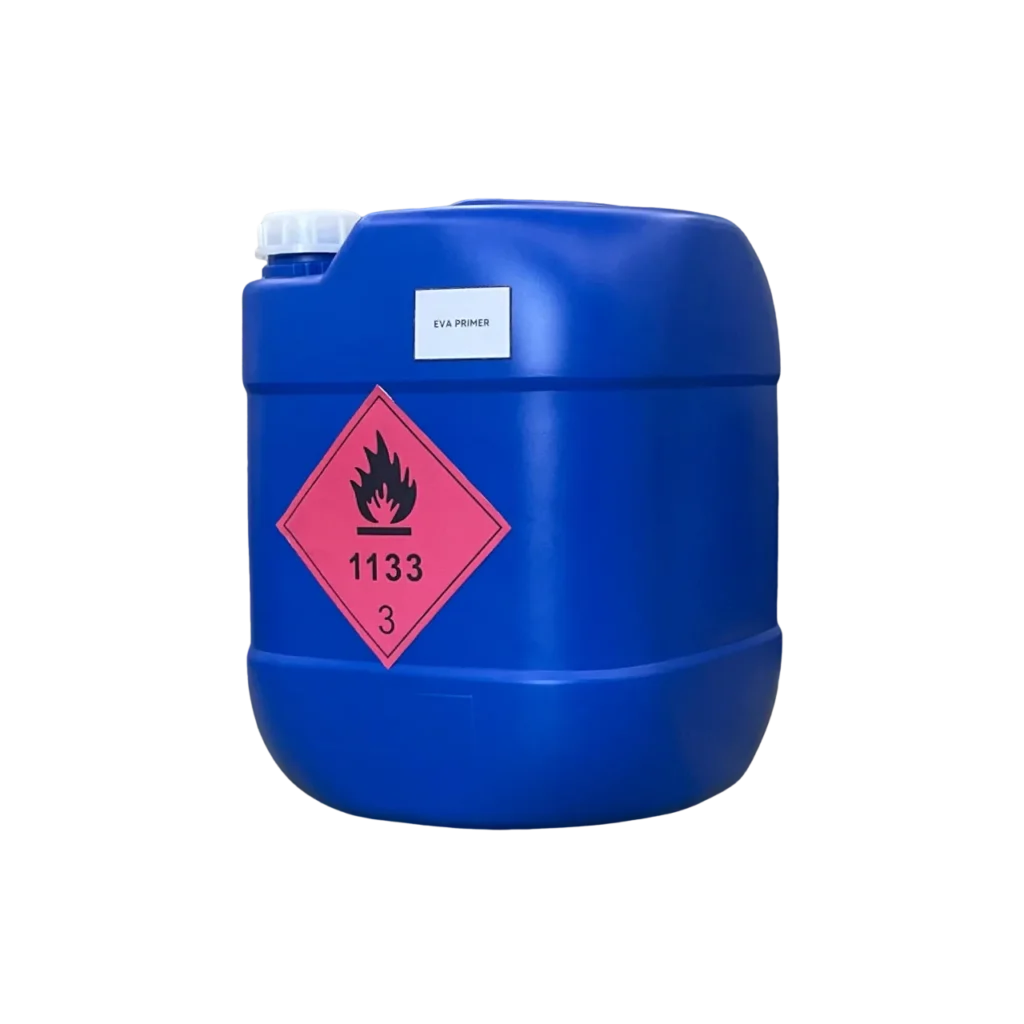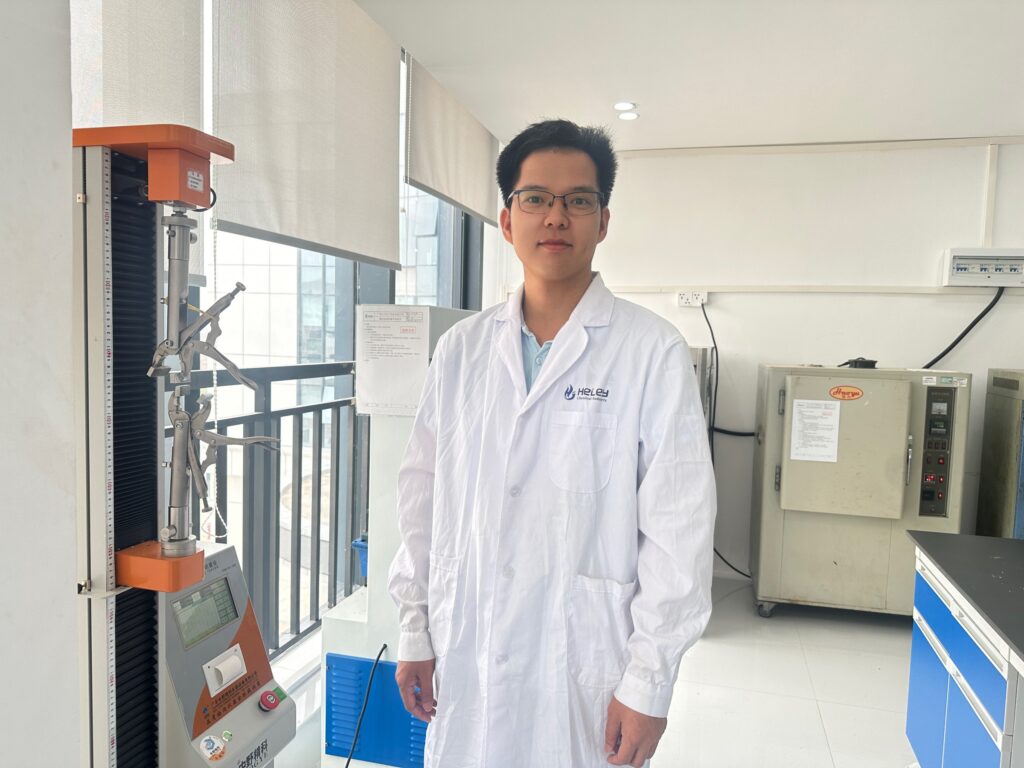
EVA primer is a specially formulated solution designed to improve the adhesion of adhesives to EVA (Ethylene Vinyl Acetate) foam surfaces. EVA foam is widely used in footwear, sporting goods, and various consumer products due to its lightweight and flexible nature. However, its smooth, low-energy surface can make adhesion challenging. EVA primers help by chemically preparing the surface, ensuring a stronger, more reliable bond when using adhesives like polyurethane or chloroprene.
Chemical Composition: Contains solvents and active agents that modify the surface of EVA foam for better adhesive compatibility.
Drying Time: Typically dries in 5-10 minutes, depending on temperature and humidity.
Viscosity: Low viscosity, making it easy to apply with brushes or spray systems.
Temperature Resistance: Works effectively within standard room temperature ranges, from 15°C to 30°C.
Shelf Life: Approximately 12 months if stored properly in a sealed container.
Specific Use Cases: Essential for bonding EVA foam to rubber, leather, and synthetic materials, commonly used in midsole assembly and athletic footwear production.
Industry Use: Widely used in footwear manufacturing, orthotic device production, and the production of sporting goods like helmets and pads.
Materials Compatibility: Designed specifically for EVA foam but can also improve adhesion on similar low-surface-energy materials like PE and PP foams.
Enhanced Adhesion: Significantly improves the bonding strength of adhesives applied to EVA foam surfaces.
Easy Application: Low viscosity allows for smooth application, either by brush or spray, without clogging.
Quick Drying: Short drying time speeds up production processes, making it ideal for high-volume manufacturing.
Consistency: Helps ensure uniform bonding across the entire surface, reducing the risk of weak spots.
Versatile Use: Can be used with a variety of adhesives, including polyurethane and chloroprene, for tailored bonding solutions.
Surface Preparation: Clean the EVA foam surface thoroughly to remove dust, oils, or other contaminants.
Apply Primer: Using a brush or spray system, apply a thin, even layer of the EVA primer to the bonding area.
Drying Time: Allow the primer to air dry for 5-10 minutes until the surface is no longer tacky.
Apply Adhesive: Once the primer has dried, apply the chosen adhesive to the prepared surface.
Bonding: Press the surfaces together as directed by the adhesive instructions to ensure a strong bond.
Safety Precautions: Wear gloves and eye protection during application to avoid skin and eye contact.
Ventilation Requirements: Use in a well-ventilated area or with proper ventilation equipment to avoid inhaling fumes.
Disposal Instructions: Dispose of primer waste in accordance with local regulations; avoid disposing of in drains or natural water sources.
Storage Guidelines: Store in a cool, dry location, tightly sealed to prevent evaporation or contamination.
Sustainability Initiatives: Available in low-VOC formulations to reduce environmental impact.
Recyclability: Packaged in recyclable containers to support waste reduction efforts.
Non-Toxic Formulas: Formulations are available that prioritize user safety and minimize emissions during application.a
Problem: Primer not adhering properly to EVA foam.
Solution: Ensure the surface is clean and dry before applying the primer to prevent contamination.
Problem: Primer dries too slowly.
Solution: Increase airflow or reduce humidity in the working area to speed up drying time.
Problem: Uneven primer application.
Solution: Use a spray system or a high-quality brush to achieve a more uniform layer.
Common adhesives in footwear manufacturing include PU adhesives, grafted adhesives, chloroprene adhesives, spray adhesives, and synthetic rubber adhesives, each suited for specific applications.
Choose adhesives based on compatibility with shoe materials, such as leather, fabric, or rubber, considering factors like flexibility and durability. You can also contact our team for more details.
Solvent-based adhesives provide strong bonds and fast drying times, while water-based adhesives are more environmentally friendly and easier to clean.
Adhesive performance can be affected by climate; extreme temperatures or humidity may impact drying times and bond strength.
Safety precautions include working in a well-ventilated area, wearing gloves and masks, and following the manufacturer’s guidelines.
The shelf life of footwear adhesives typically ranges from 6 months to 2 years, depending on storage conditions and formulation.
If you need customized product or technical support, please click the button below. Our expert will come back to you within 24 hours.


